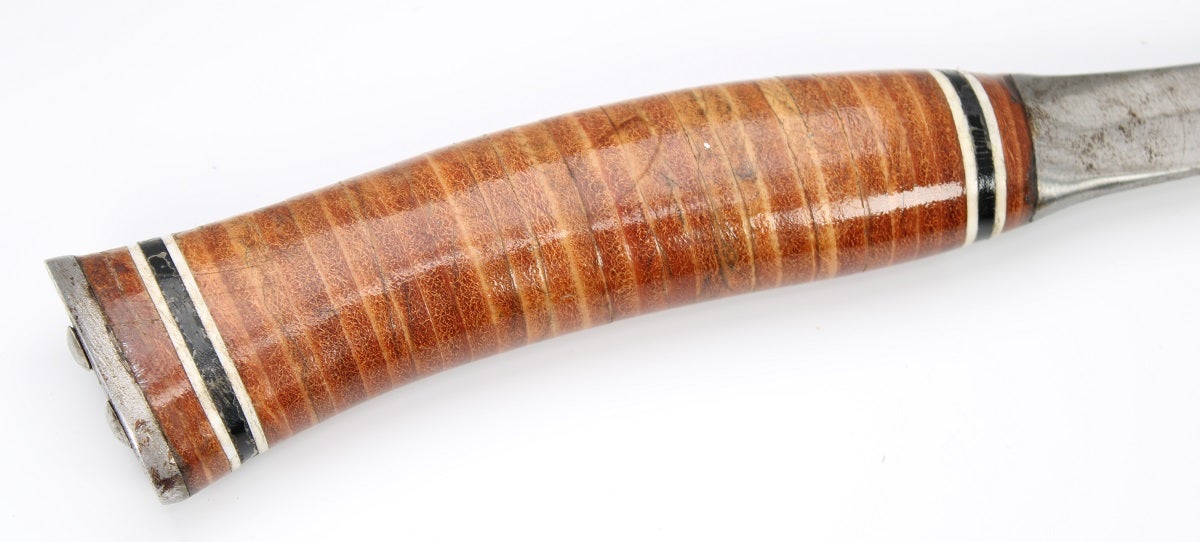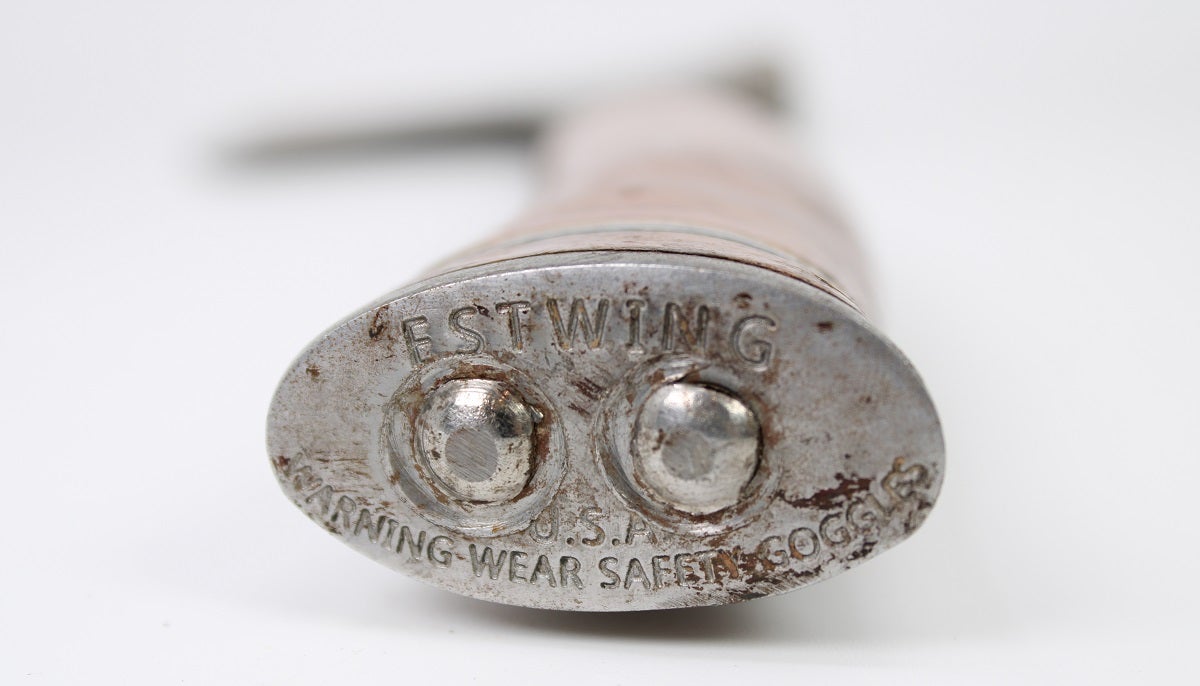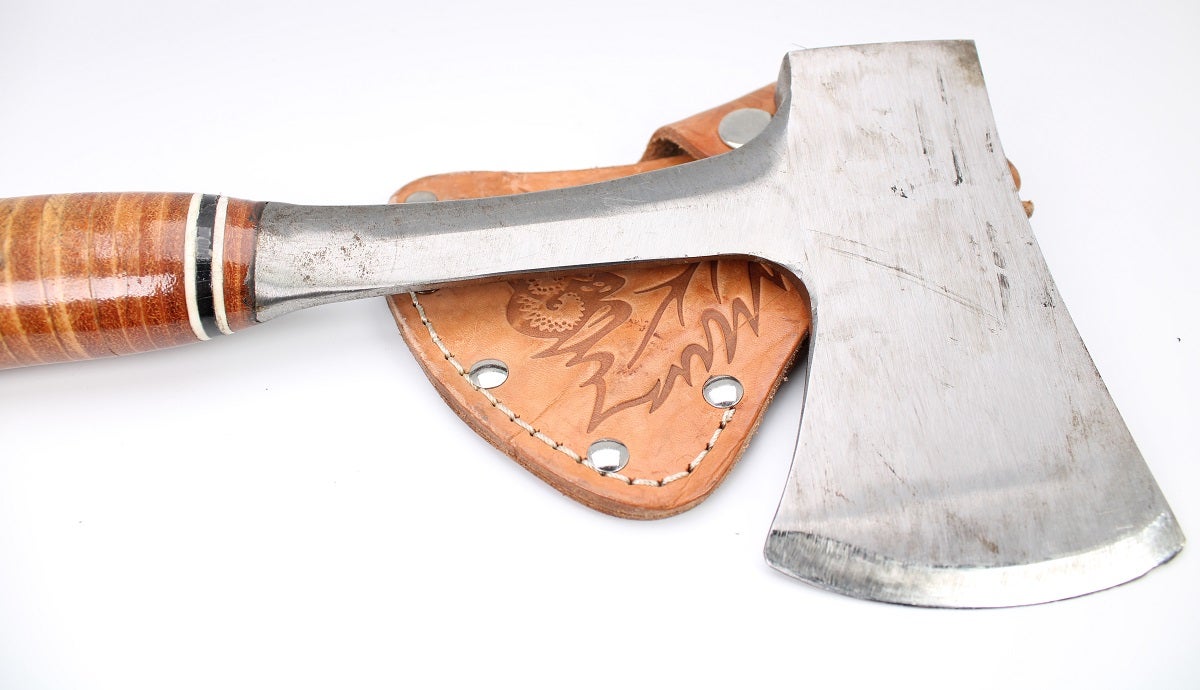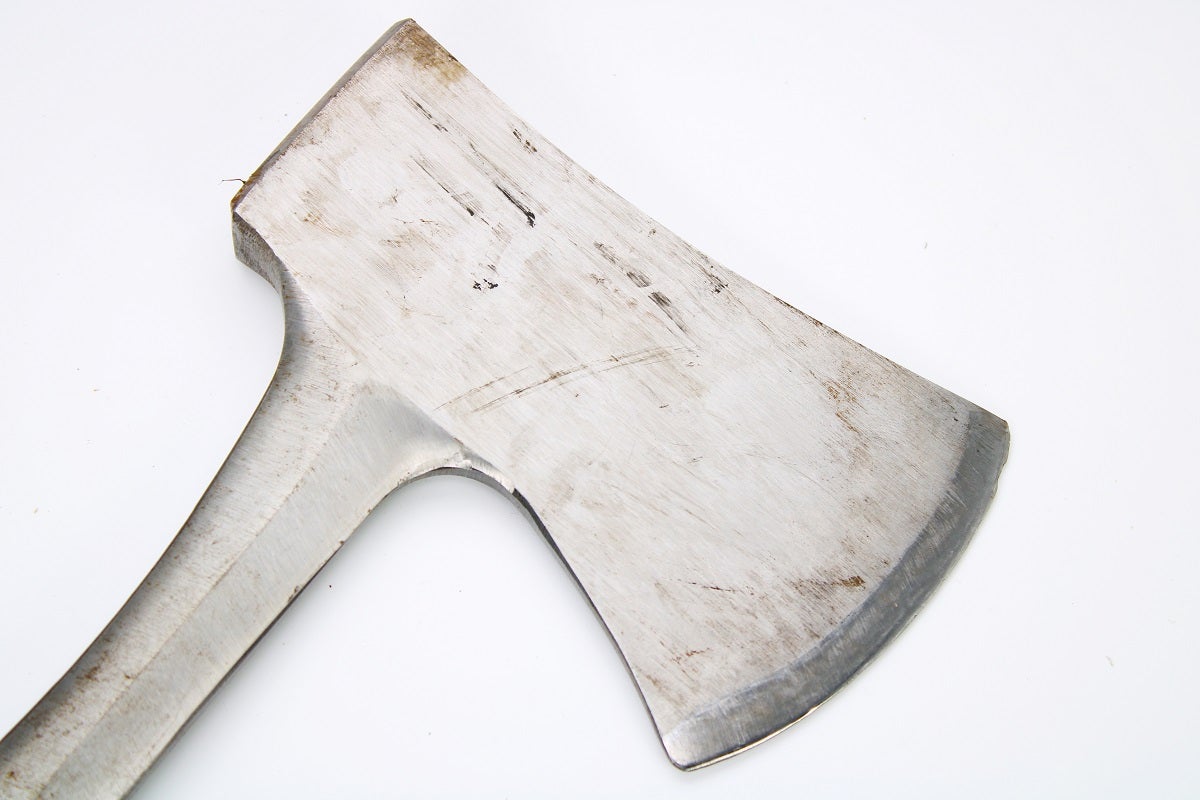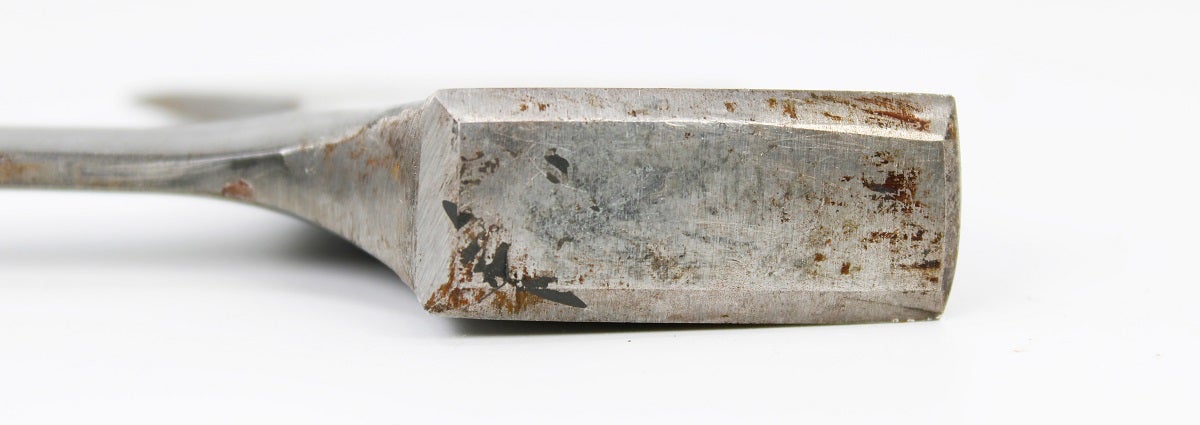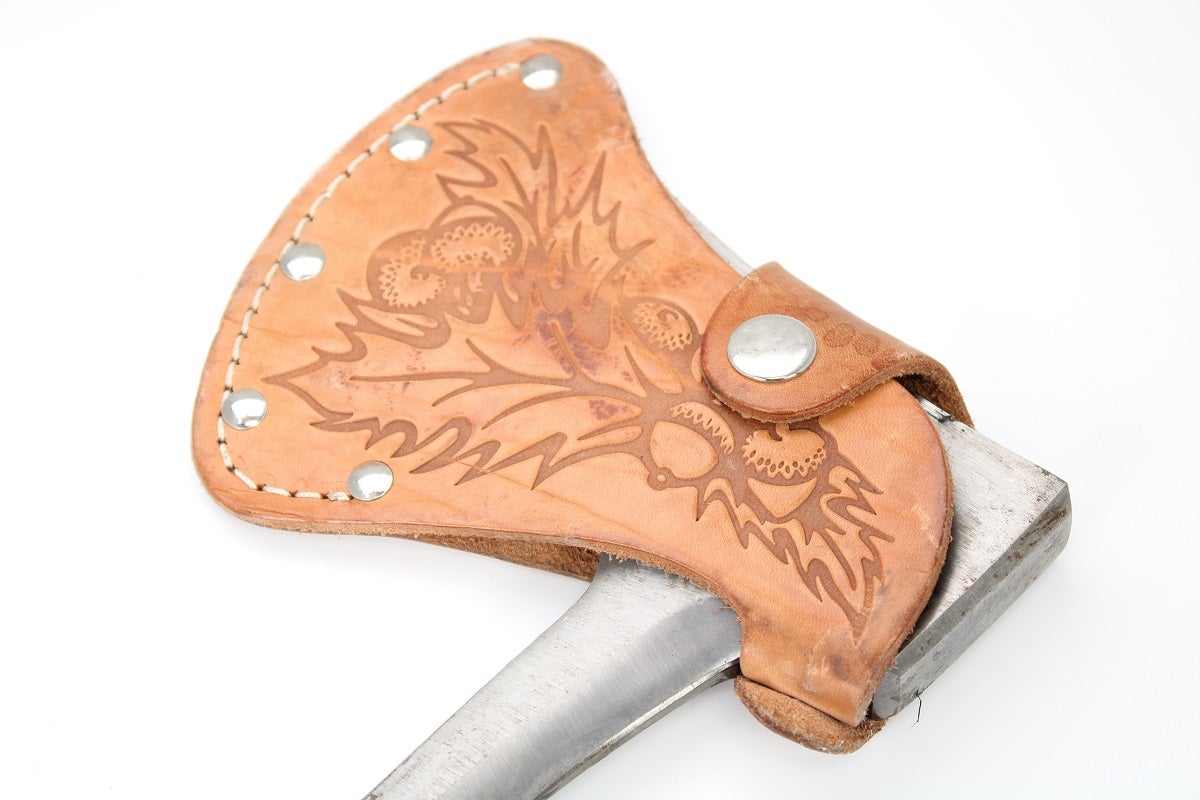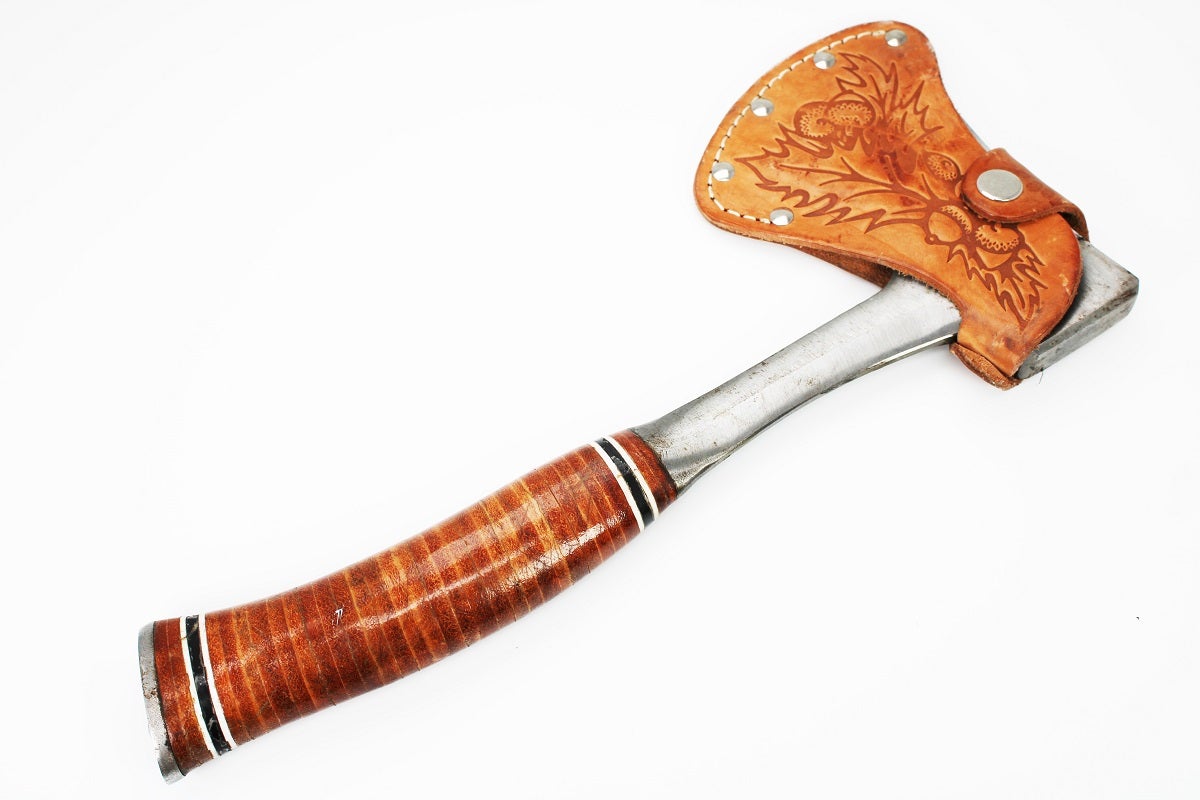AO Review: Estwing Sportsman Axe – Only Camping Chopper You Need
Travis Olander 12.20.22
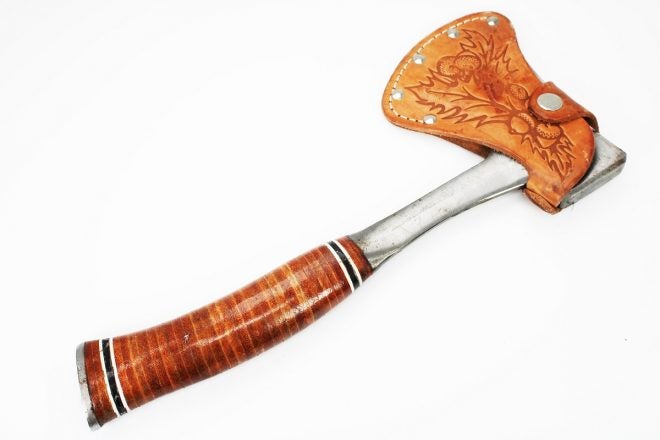
This hiker has rucked through some of the country’s most remote terrains. That includes advanced trails and mountain passes in Utah, the deserts of St. George and Arizona, and the Appalachian Trail sections in Pennsylvania. Never have I gone overnight in the woods without my Estwing Sportsman Axe. It’s a small, but tough wood chopper and it doubles as a great makeshift hammer. It’s provided plenty of firewood to keep me warm for years, and it doesn’t take up much space and weight. I think it’s a must-have hand tool for any trail camper. So, we’re doing a quick review – and yes, this fine specimen is ugly, scratched, and scuffed. It’s my personal sidekick and I’ve used it for well over a decade. You’re getting an honest review, here.
The Estwing Sportsman Axe Specs
- Steel: 1055 Carbon
- Handle: Stacked Leather (Epoxy)
- Cutting Edge: 33-Degree Convex Grind
- Edge Length: 3.2″
- Head Length: 5.0″
- Handle Length: 6.1″
- Handle Width: 1.5″
- Overall Length: 13.1″
- Weight: 1.8 lbs
The Leather Handle
The stacked leather is bound tightly and it looks great. It’s weathered and worn in well over the years. I’ve had no issues with the handle holding up to plenty of hot and cold cycles, and a fair share of physical abuse.
The leather is bonded, stacked, and cured before it’s shaped alongside the spine. This makes for a seamless transition between the spine and leather itself, eliminating any bumps or hot spots that might otherwise start to dig into your palm after plenty of use.
The base of the handle has a subtle flare that helps prevent slippage, and the slight concave curve relative to the cutting edge provides a nice strike angle. The handle is wide and thin, which prevents rotation while you’re holding it. It’s a simple but effective design that doesn’t tire out your digits or wrist after plenty of chopping.
The butt cap uses two large, peened welds to hold the leather tight, and it’s never come loose or started to wobble. I’ve used it to beat a thing or two, evidenced by the random bits of oxidation and the odd scuff or dent. But this is a tough handle and cap, make for the long haul.
The Spine
I love that the axe head and spine are formed from a single piece of forged 1055. One-piece forged axes are just way tougher than the typical split wood handled axe. Plus, the center of gravity rests right in the middle of the spine. Once you start throwing all this front-heavy weight around, you’ll find the Estwing Sportsman Axe carves and digs into whatever you’re chopping.
The Head
The axe head is at utilitarian as they come: A simple convex grind and wide angle give this relatively soft steel plenty of resiliency. Sharpening is an infrequent affair considering how soft this edge really is, too. Springing for extra money on a high-carbon, hard axe head is, truly, a waste of money. The harder the steel, the more brittle the edge — and the more likely you are to chip that edge once you start putting your axe through its paces.
I’ve run this axe across dozens of hardwood trunks, and I’ve even used it to chop apart a copper pipe or two. No issues with chipping or edge damage. You’ll note one small nick towards the top of the edge. That came from a rock that was unfortunately hiding in the dirt underneath a log I was chopping in half. It happens. Thankfully, the 1055 is easy to grind and repair with a low-grit sharpening stone. Running across both sides with a 400-grit stone, cleaning it up at 1,200-grit, and then finishing off with a 3,000-grit for honing will bring out an impressively sharp edge. At least for how wide and thick of an edge this thing has.
The backside of the axe head makes a perfect hammer. It’s a broad striking surface that makes it deft at handling batoning larger logs with a sledge, too, effectively turning the Estwing Sportsman Axe into a wood-splitting wedge. More frequently I’ve used it to strike tent poles and the like. But this hammer head will withstand some serious strikes if you need to drive through large logs, but don’t have a larger axe with the proper swing.
The leather sheath is a nice tough, too. I fear Estwing Sportsman Axe might’ve discontinued this beautiful little piece of leatherwork, though — all the modern Sportsman’s Axes I see nowadays appear to come with a sheath made from black ripstop fabric.
You can still buy the leather sheath on its own, and I highly recommend it: It’s US-made, and has some nice stampwork with excellent stitching and rivets. Like the handle, it’s worn in with a nice patina. It’s a top grain that resists staining relatively well. I’ve occasionally thrown some gun oil on there to keep it supple.
In Short: A Cheap, Good Axe
The Estwing Sportsman Axe is a classic tool. It’s been around for decades and earned high favor thanks to its legendary toughness and resiliency, and surprisingly low price. At the time of this publication, you can become the proud owner of your own chopper for a cool $40. That’s on helluva price for this amount of steel, fastened together well, and made to last. If you want to see just how much folks love this little axe, check out how we restored another old Estwing Sportsman’s broken handle by making a new micarta handle out of a cashmere scarf.
